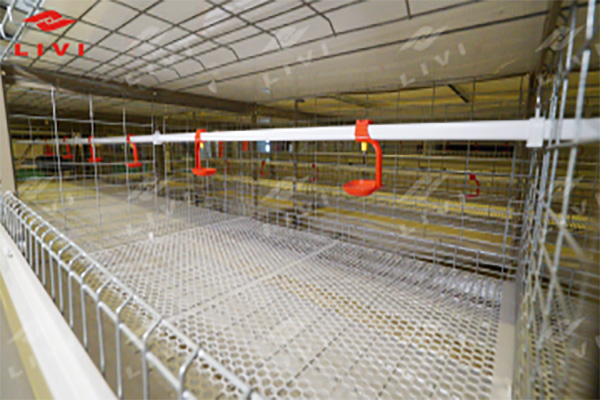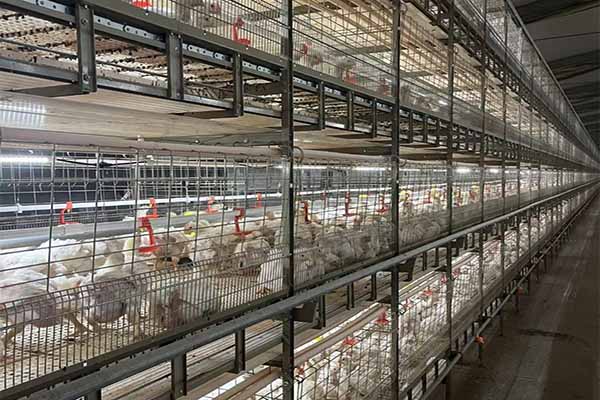How to Reduce Feed Waste in Chicken Farms in Uganda
Time : 2025-06-24
Feed waste in chicken farms is a significant issue that not only affects the profitability of the farm but also contributes to environmental degradation. In Uganda, where the poultry industry is rapidly growing, finding effective ways to reduce feed waste is crucial. This article delves into the various strategies and techniques that can be implemented to minimize feed waste in chicken farms, leveraging professional poultry equipment knowledge.
Understanding the Importance of Reducing Feed Waste
Feed costs constitute a substantial portion of the total expenses in poultry farming. Waste not only means financial loss but also a loss of valuable nutrients that could be utilized by the chickens. Moreover, the excess feed that is not consumed ends up in the environment, leading to pollution and resource depletion. By reducing feed waste, farms can enhance their economic sustainability and contribute to environmental conservation.
Assessment of Current Practices
The first step in reducing feed waste is to assess the current practices on the farm. This involves reviewing the feed storage, handling, and distribution processes. Common areas where feed waste occurs include:

- Improper feed storage leading to spoilage
- Inadequate feed handling, resulting in spillage or contamination
- Overfeeding due to incorrect feed formulations or feeding schedules
- Inefficient feeders that do not provide the right amount of feed to each chicken
Strategies for Reducing Feed Waste
1. Optimize Feed Storage Conditions
Proper feed storage is essential to prevent spoilage and minimize waste. Here are some key recommendations:
- Store feed in a cool, dry, and well-ventilated area to prevent moisture and pests.
- Use airtight containers or feed bins to keep the feed dry and free from insects and rodents.
- Implement a first-in, first-out (FIFO) system to ensure that older feed is used first.
- Regularly inspect feed for signs of spoilage or contamination and discard any that is no longer suitable for consumption.
2. Improve Feed Handling Techniques
Efficient feed handling can significantly reduce waste. Consider the following tips:
- Train farm workers on proper feed handling techniques to minimize spillage and contamination.
- Use clean and sanitized equipment for feed handling to prevent cross-contamination.
- Implement a systematic approach to feed distribution to ensure that each chicken receives the correct amount of feed.
3. Implement Feed Budgeting and Feeding Schedules
Creating a feed budget and establishing feeding schedules can help prevent overfeeding and reduce waste:

- Calculate the feed requirements based on the chicken breed, age, and production goals.
- Develop a feeding schedule that aligns with the chickens’ nutritional needs and feeding patterns.
- Adjust the feeding schedule as needed to account for changes in growth rates or production levels.
4. Utilize Advanced Feeders
Investing in advanced feeders can significantly reduce feed waste:
- Consider using automated feeders that provide the right amount of feed to each chicken, reducing overfeeding.
- Select feeders with features like adjustable feed flow rates and automatic refill capabilities to minimize waste.
- Choose feeders that are easy to clean and maintain to prevent contamination and ensure the longevity of the equipment.
5. Implement Feed Conversion  Rate Monitoring
Rate Monitoring
Monitoring the feed conversion rate (FCR) can help identify areas where feed waste is occurring:
- Regularly measure the FCR by comparing the amount of feed consumed to the weight gain of the chickens.
- Analyze FCR data to identify any fluctuations and investigate the possible causes of feed waste.
- Make adjustments to feeding practices or equipment as needed to improve FCR and reduce waste.
Conclusion
Reducing feed waste in chicken farms in Uganda is a multifaceted challenge that requires a combination of strategies and techniques. By optimizing feed storage conditions, improving feed handling techniques, implementing feed budgeting and feeding schedules, utilizing advanced feeders, and monitoring the feed conversion rate, chicken farmers can significantly reduce waste and improve their farm’s economic and environmental sustainability.











